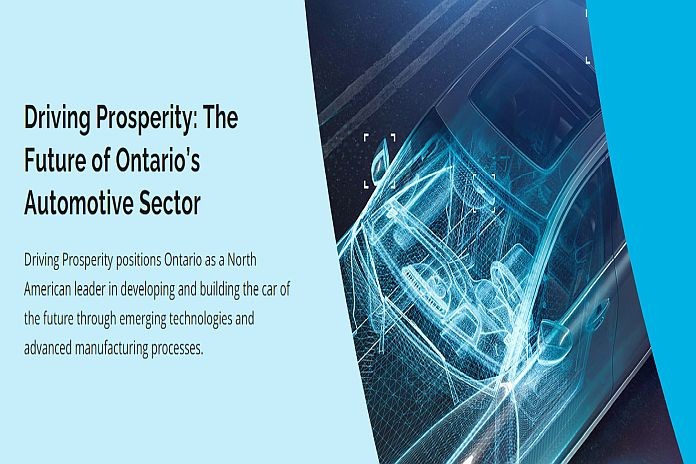GUELPH, Ontario – The Ontario government has released the next phase of its Auto Strategy to secure production mandates for hybrid and electric vehicles, to create a domestic battery ecosystem, and position Ontario as a North American automotive innovation hub.
At Linamar in Guelph, premier Doug Ford and Vic Fedeli, minister of economic development, job creation and trade, unveiled the province’s commitment to the future of Ontario’s auto sector in Phase 2 of Driving Prosperity ― The Future of Ontario’s Automotive Sector. Following the release of the first phase of the plan in 2019, this second phase will strengthen Ontario’s auto industry and make the province more competitive for new investments. New Initiatives in Phase 2 respond to the global demand for electric vehicles and will support domestic parts producers, workers, and innovators across the province.
“Our government has a plan to unleash Ontario’s economic potential as we build up home-grown supply chains for electric vehicles and battery manufacturing,” said premier Doug Ford. “This plan makes clear that Ontario is a world-leading partner in creating the best vehicles with the best labour force and clean energy. With this next phase of Driving Prosperity, we’re telling the world: we want your businesses!”
Phase 1 of Driving Prosperity had three action pillars: competitive business climate, innovation, and talent. Phase 2 builds on the successes of the government’s partnership with the industry through Phase 1 and positions Ontario as a North American leader in developing and building the vehicle of the future through emerging technologies and advanced manufacturing processes.
Driving Prosperty Phase 2 is anchored by the objective to maintain and grow Ontario’s auto sector by building at least 400,000 electric and hybrid vehicles by 2030. The province will partner with the auto sector to achieve four goals:
- Reposition vehicle and parts production for the car of the future through new automaker mandates for hybrid and battery EVs, attract a new battery assembly plant and increase exports of Ontario-made auto parts and innovations;
- Establish and support an electric battery supply chain ecosystem that connects Northern Ontario’s mineral wealth with the manufacturing strength of Southern Ontario;
- Innovate in every stage of development from creation, to design, to adoption of new products and services;
- Invest in Ontario’s auto workers by equipping them with the skills they need to secure rewarding, high-paying jobs in the auto sector and across the broader supply chain.
The auto industry responded to the three pillars in Phase 1 by accelerating its shift towards next-generation vehicle technologies. Recent announcements show automakers are investing around $4 billion in transformative electric vehicle investments at their Ontario assembly plants, including ;
- Ford with $1.8 billion to produce battery EVs and five new EV models at its Oakville assembly complex;
- Stellantis with $1.5 billion to upgrade its assembly plant in Windsor to build new electrified vehicles; and,
- GM investing $1 billion in its plant in Ingersoll to produce their BrightDrop EV delivery van, the first all-electric vehicle produced by a mainstream automaker in Canada.
By capitalizing on Ontario’s numerous advantages in the auto sector – innovation, award-winning manufacturing, state-of-the-art research and development facilities, a skilled workforce, a leading tech cluster in North America, and access to key minerals and resources – the province will continue to transform and grow the auto sector. This will provide good jobs for workers and support for their families and communities.
“Phase 2 of Driving Prosperity, together with programs like the Regional Development Fund, will have a real impact on regional economies across Ontario,” said Fedeli.
“Phase 2 will support our talented workforce, harness the province’s many strengths across the sector, and leverage our critical mineral wealth in the North. In the coming weeks, we look forward to highlighting the specific initiatives that will make up Phase 2 of Driving Prosperity and how they will help us achieve these goals as we move into this exciting new phase in Ontario’s automotive sector.”
By lowering taxes, reducing electricity costs and red tape, the government has reduced the cost of doing business in Ontario by nearly $7 billion a year. These measures continue to lay the foundation to ensure that the auto sector is successful, competitive, and ready to meet shifting global demand.





